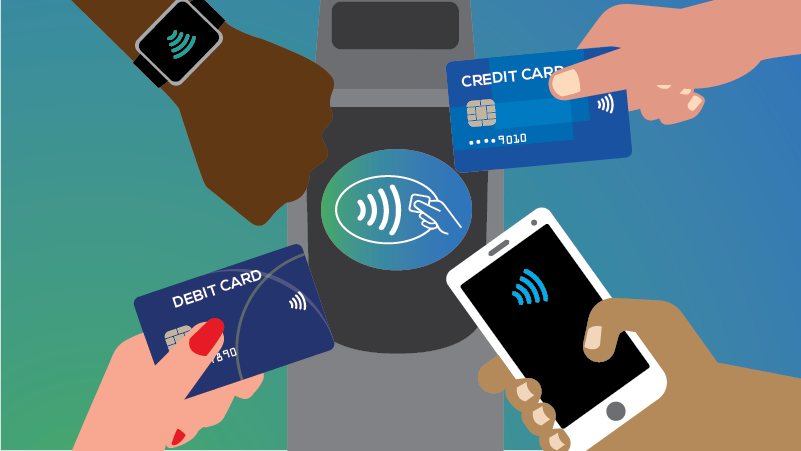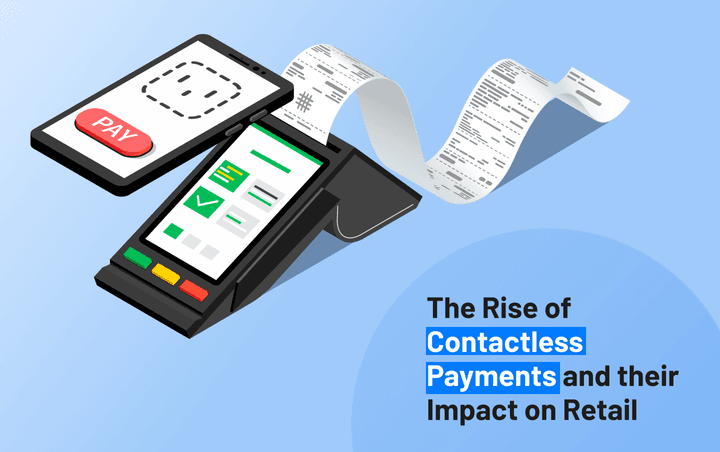Fintech payment platforms trends are shifting the way we manage money. In 2023, from a tap on your phone to the buzz of blockchain, we’re riding the wave of major changes. Each tap, click, and transfer now tells a story of tech making cash seem like a relic from the past. It’s not just about paying faster; it’s about secure, smart moves in our digital wallets. We’re witnessing a boom in mobile and contactless ways to spend, we’re banking on blockchain to keep our transactions tight, and we’re crossing borders with cash in our code, not our pockets. And underneath all these tools? A world of rules is morphing to keep our money moves sharp and straight. Jump in and discover how these surges shape your day-to-day dough and how you can stay ahead in this rapidly evolving financial landscape.
The Rise of Contactless and Mobile Payment Solutions
Exploring Contactless Transaction Technology
What does contactless transaction technology mean for users? Contactless payment lets you pay without touching cash or cards. You simply tap your phone or card on a reader.
This tech uses radio frequency identification (RFID) or near field communication (NFC). With it, you can check out faster and safer. Plus, you don’t need to enter a PIN for small buys.
You’ve seen it in shops, food places, and on buses. Why do you think it’s popping up everywhere? It’s because it’s easy to use and keeps your bank info safe. Stores like it too; it speeds up lines and it’s cleaner.
Businesses need to keep up. They must offer contactless pay to stay in the game. They invest in new point of sale (POS) systems for this. So next time you see someone just tap their phone to pay, that’s contactless tech at work.
Assessing Mobile Wallet Adoption Rates
Why are mobile wallets becoming popular? A mobile wallet stores your card info on your phone, so you can pay with it. Many folks are using mobile wallets now.
Why’s that? They fit today’s ‘on-the-go’ life. They are also more secure than carrying a bunch of cards. Your card info stays locked. Only your phone’s security can open it.
Plus, mobile wallets often give deals and rewards. Who doesn’t love saving money?
But, are all people happy to switch to mobile wallets? Not yet. Some worry about phone theft and losing their wallet. Or they don’t trust the tech. Learning new tech can be hard for some.
Young people jump on mobile wallets fast. They grew up with tech, so it’s not new to them. Businesses need to teach others about mobile wallets. This way, they can feel safe using them too.
Soon, you might not even need a physical card. Mobile wallet rates will keep climbing as more folks get how handy they are. And when they do, paying for your coffee with a phone tap will be the norm.
In short, contactless pay and mobile wallets are big news. They make buying things fast and safe. As we dive deeper into 2023, watch these trends grow. They could change how we think about money and shopping for good.
Blockchain and Cryptocurrency: The New Frontier in Fintech Payments
Integrating Blockchain for Secure Payment Processing
People wonder, ‘Is blockchain safe for moving cash?’ Yes, it’s safe. Let me tell you how.
Blockchain keeps payment info on many computers. Think of it like a group project where everyone has a copy of the work—no cheating because everyone can see the changes. This makes fraud tough and keeps your money safe. Plus, it’s really fast—no waiting for banks to open!
Folks are loving this for sending cash around the world. It’s neat because it skips the usual bank stuff, making things zip across borders with ease. Payment gateways get fresher with blockchain, too—new tech makes them smarter and more secure.
The Impact of Cryptocurrency in Fintech
Now, let’s chat about digital coins in finance. Cryptocurrency—money that lives on the internet—is shaking things up big time. When you use these coins, no need for banks. You are the bank; pretty cool, right?
Bitcoin and pals are changing shopping. Buying stuff with digital coins is becoming normal, like with credit cards back in the day. More stores say ‘yes’ to crypto, and people dig the freedom it brings. Plus, it makes buying from faraway lands easier—no fuss over exchange rates!
It’s not just about buying stuff, though. Folks can lend, save, and even grow their stash using crypto. It’s like a playground for money, with new games popping up all the time. We’re talking about peer-to-peer crypto trading, making money moves without the middleman.
But hang on, what about the rules? Yep, governments are catching up, putting in rules to keep things fair. That’s good; it means more people can join in safely. We’re seeing more cards and apps work with crypto, so people can spend anywhere, anytime. It’s a blast and it’s just the start!
Innovations in Security and Cross-Border Transactions
Advancements in AI and Biometric Authentication for Payment Security
We see a big leap in keeping payments safe. Now we use our body and smart tech for this. Faces and fingerprints unlock our money moves, thanks to biometric authentication. AI, or artificial brains, keeps watch for anything fishy. It’s like having a smart guard dog that never blinks.
How do these AI advancements improve security? AI spots fraud fast and learns as it goes. It can see patterns we would miss. For example, if someone tries to buy something pricey far from where they usually shop, AI can flag it. It’s not perfect, but it’s getting better every day.
Navigating the Complexities of Cross-Border Payment Solutions
Let’s look at moving money across the globe. It used to take days; now, it’s often just minutes. But there’s more to sort out. We must deal with different money systems and rules. And we need ways to send payments that everyone can trust.
How are payment platforms managing these cross-border complexities? They use tech like blockchain. This is a digital ledger that no one owns but everyone can see. It keeps a clear record of who sent what to whom. Plus, it works the same everywhere – kind of like a global language for money.
Cross-border payments also get tangled in red tape. The rules for moving money are not all the same. So, fintechs are making smart tools to help us follow these rules without headaches. With these tools, your money can travel worry-free.
In summary, security in payments is not just locks and keys anymore. It’s using pieces of us – like our eyes and fingers – and mixing them with high-tech brains that never sleep. And when we send money on long trips, we’re building new bridges with blockchain. Plus, we’re finding smoother paths through the forest of rules. All this work aims to make payments snap fast and lock tight, no matter where you are or where your money needs to go.
The Regulatory and Economic Shifts Shaping Fintech
The Role of Regulation in Electronic Payment Evolution
We see big changes in how we move money. It’s getting faster and safer. A key player? Regulation of electronic payments. Big words, I know. Let’s break it down. New rules are making sure your cash moves smooth and sound. No bumps on the road. They make sure no one’s taking a slice of your pie.
What’s the deal about these rules anyhow? Well, they keep your cash safe. Without them, your money could be free game for the bad guys. It’s like a referee in a game. They make sure everyone plays nice. This way, parents can rest easy. Their kid’s lemonade stand money goes right into their piggy bank.
Understanding the Cashless Economy and Financial Inclusion via Fintech
Cash is becoming old news. We’re moving to a world where your phone pays for stuff. Cashless economy growth is about making buying things a snap. You’re in line for a burger. You pay with your phone. No digging for coins. This is big for folks who never had a bank before. We call this financial inclusion through fintech.
“With fintech, more people can join in,” that’s what my buddy at the corner store says. He’s right. Even if you live far from a bank, your phone brings the bank to you. You can send money to a friend just by tapping some buttons.
This shift is huge. Not just in big cities but all over the globe. Those without a bank before? They’re in the game now. Moving money is no longer for just the few. It’s for everyone. If we keep playing our cards right, everyone gets a fair shake at the money table.
In this post, we dove into the fast-paced world of fintech and electronic payments. We saw how tap-and-go tech and phone wallets are making waves. Then we navigated through the exciting realm of blockchain and digital coins, noting their power to reshape how we handle money. We also explored cutting-edge security via AI and unique body traits, making payments safer than ever. Plus, we tackled the complex dance of money crossing borders with ease. Finally, we touched on the rules and shifts that guide fintech towards a future without cash, reaching more people.
Think of it—in just a few taps, your money zooms off safely, even across the globe. New tech not only speeds things up but invites everyone to join the financial world. And with watchful eyes making sure all is fair and square, trust in this digital money shift grows. It’s a thrilling time in the world of payments, and we’re just getting started. Let’s embrace these changes and the power they give each of us in our wallets and at our fingertips. Fintech is not just changing money; it’s changing lives.
Q&A :
What are the latest trends in fintech payment platforms?
With the rapid evolution of technology, trends in fintech payment platforms are leaning towards enhanced user experiences through seamless integration and improved security. Innovations such as contactless payments, digital wallets, and the use of blockchain for secure transactions are on the rise. Additionally, Artificial Intelligence and Machine Learning are increasingly being used for fraud detection and personalized customer experiences.
How are mobile payments influencing fintech trends?
Mobile payments have become a major influencer in fintech trends, mainly due to their convenience and accessibility. The incorporation of Near Field Communication (NFC) technology, QR code payments, and peer-to-peer (P2P) apps reflect the industry’s shift towards mobile-first strategies. Moreover, smartphones are becoming pivotal in emerging markets for financial inclusion, as they provide unbanked populations with access to digital financial services.
What role does blockchain play in fintech payment platforms?
Blockchain technology plays a significant role in fintech payment platforms by offering decentralized, transparent, and secure transaction solutions. It facilitates faster cross-border payments, reduces operational costs, and minimizes instances of fraud. The adoption of cryptocurrencies and stablecoins within payment platforms also exemplifies the impact of blockchain in the current financial technology landscape.
Are digital wallets replacing traditional banking?
While digital wallets are increasingly popular, they are not necessarily replacing traditional banking but rather transforming it. Many consumers prefer the convenience and features offered by digital wallets, such as instant transfers and mobile payments. Traditional banks are responding by integrating digital wallet features into their offerings, thus creating a complementary relationship between the two.
How is AI shaping fintech payment platform innovations?
AI is a key driver in fintech payment platform innovation, streamlining operations and improving customer experiences. Through the power of AI, platforms can analyze vast amounts of data for better risk management, offer personalized financial advice, and automate customer service with chatbots. As AI technology advances, its influence on payment security, compliance, and predictive analytics continues to grow, setting new standards in the fintech industry.


